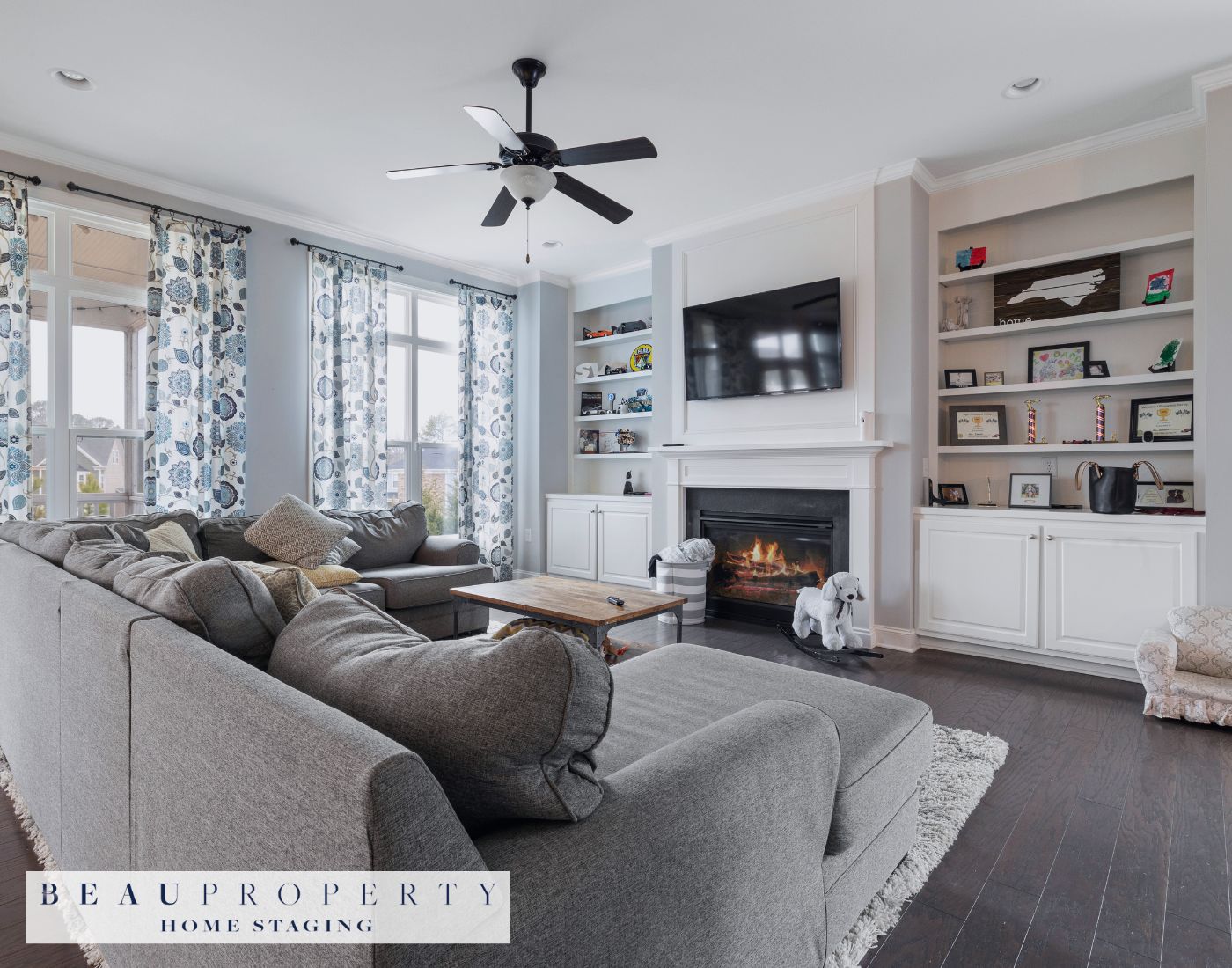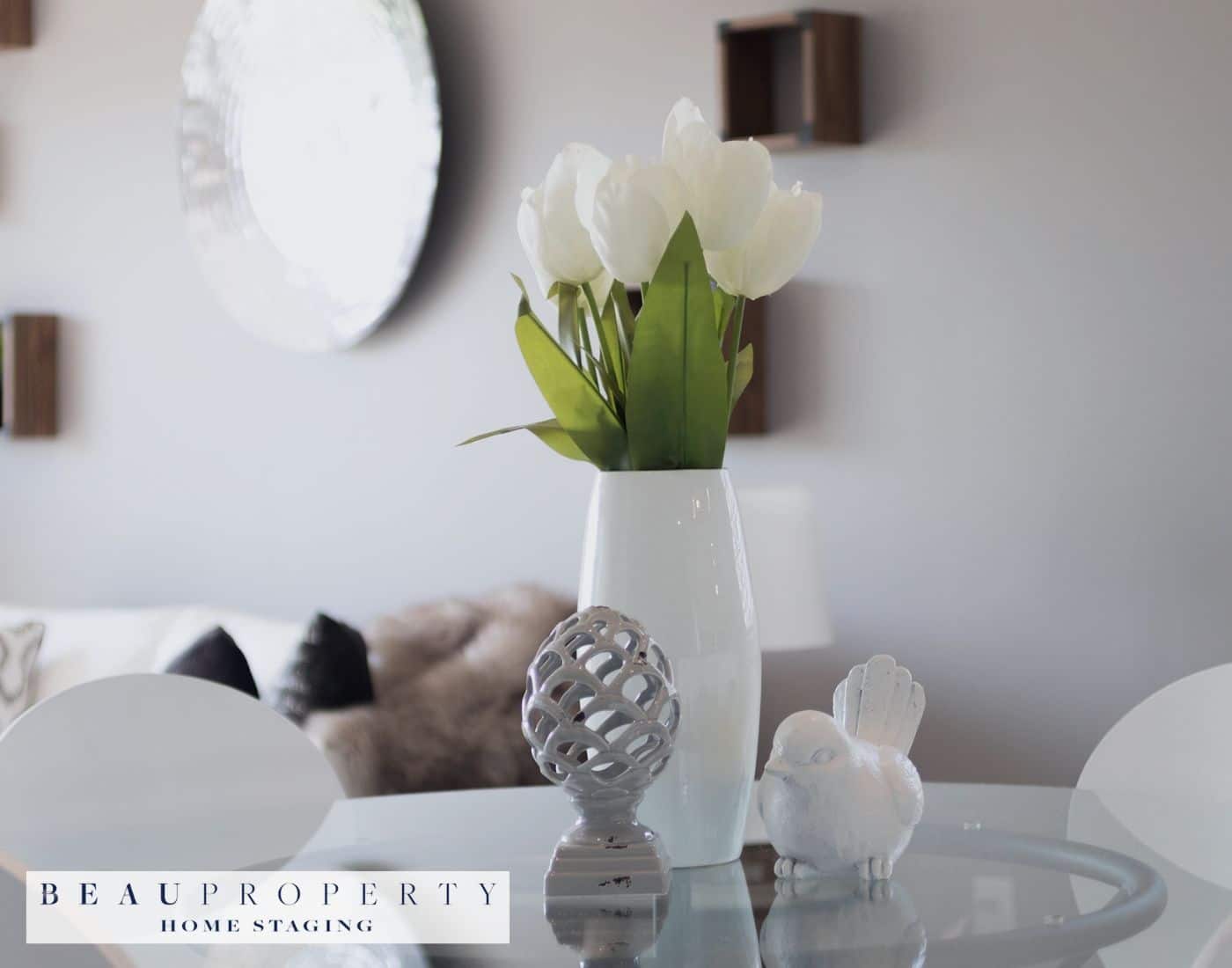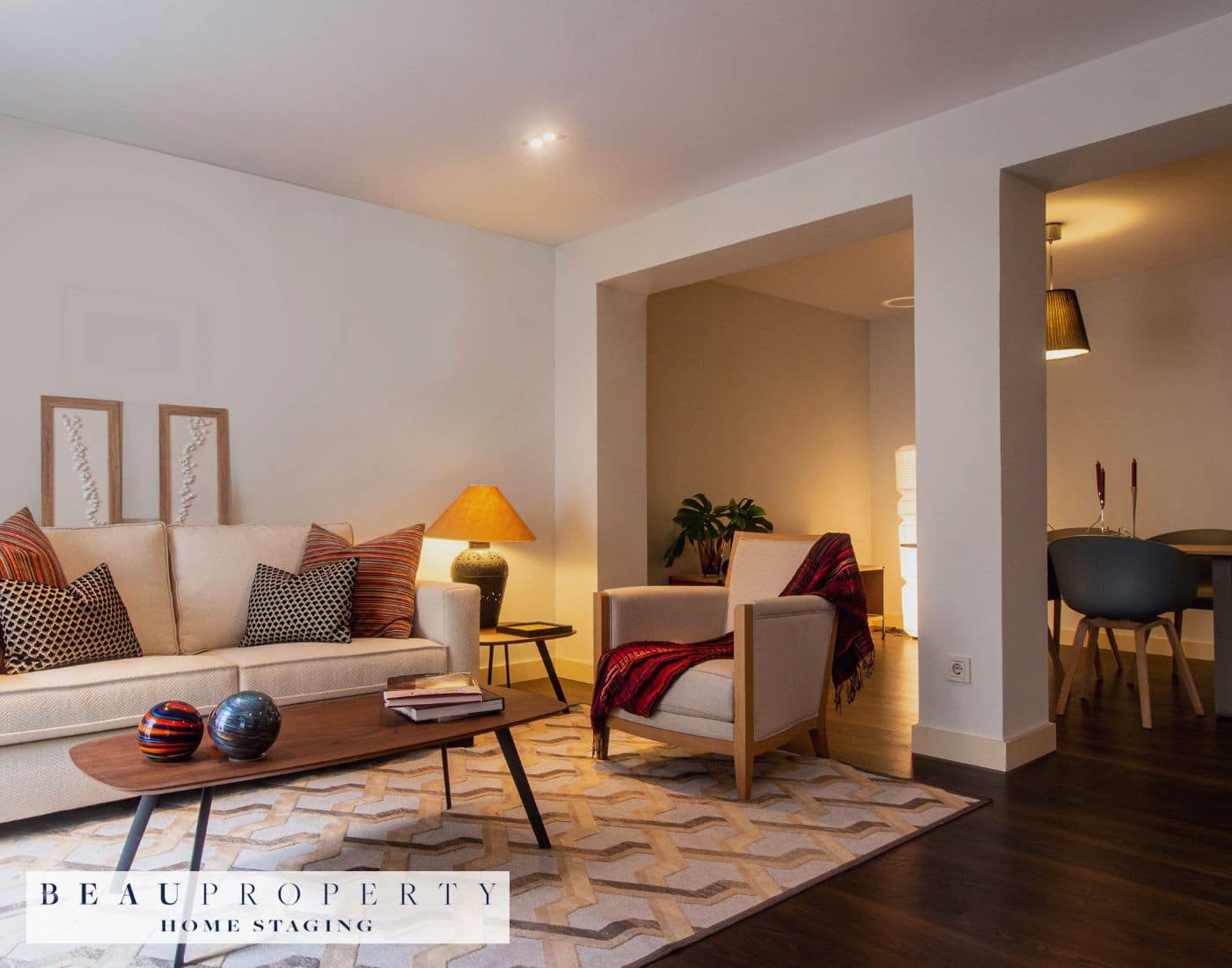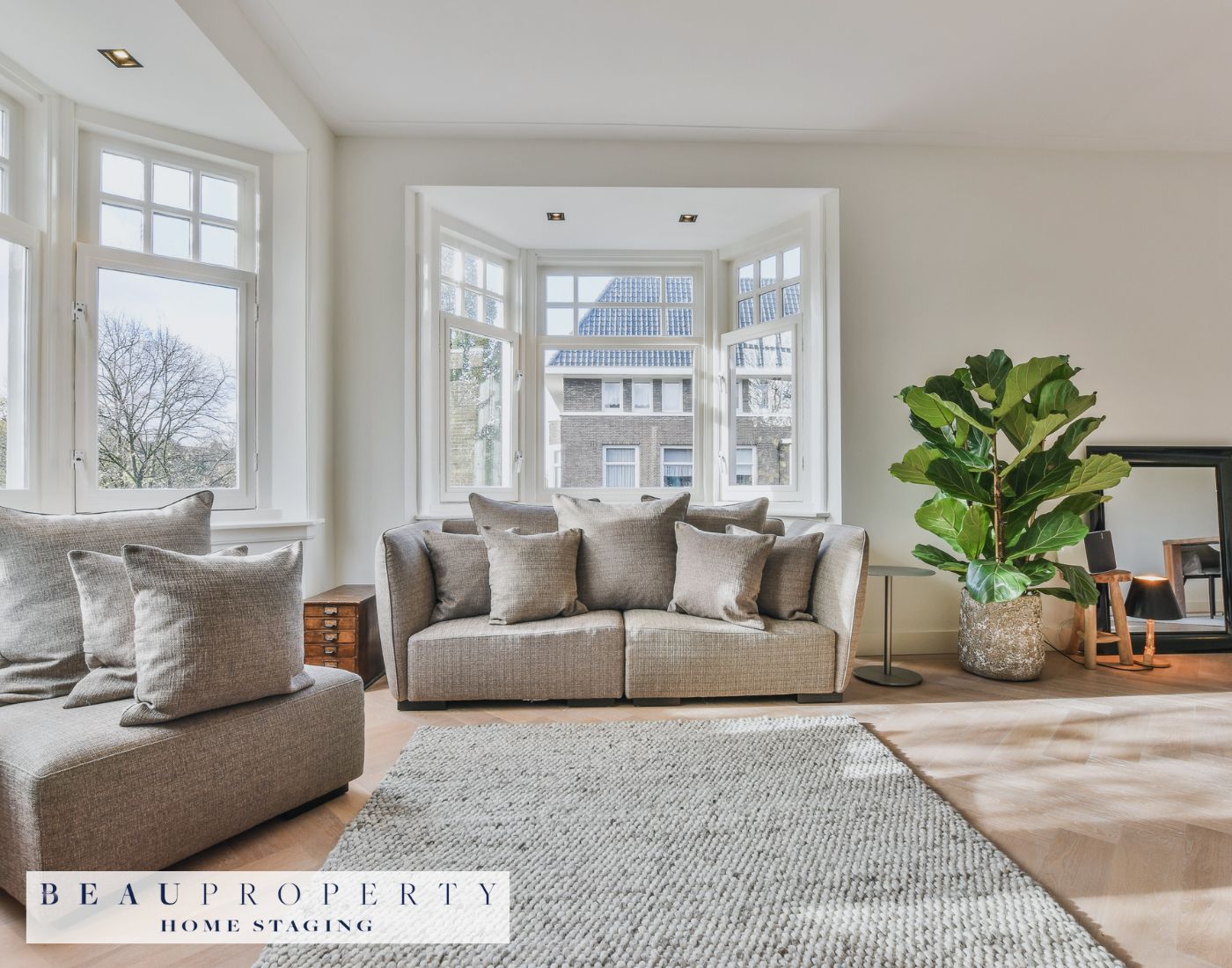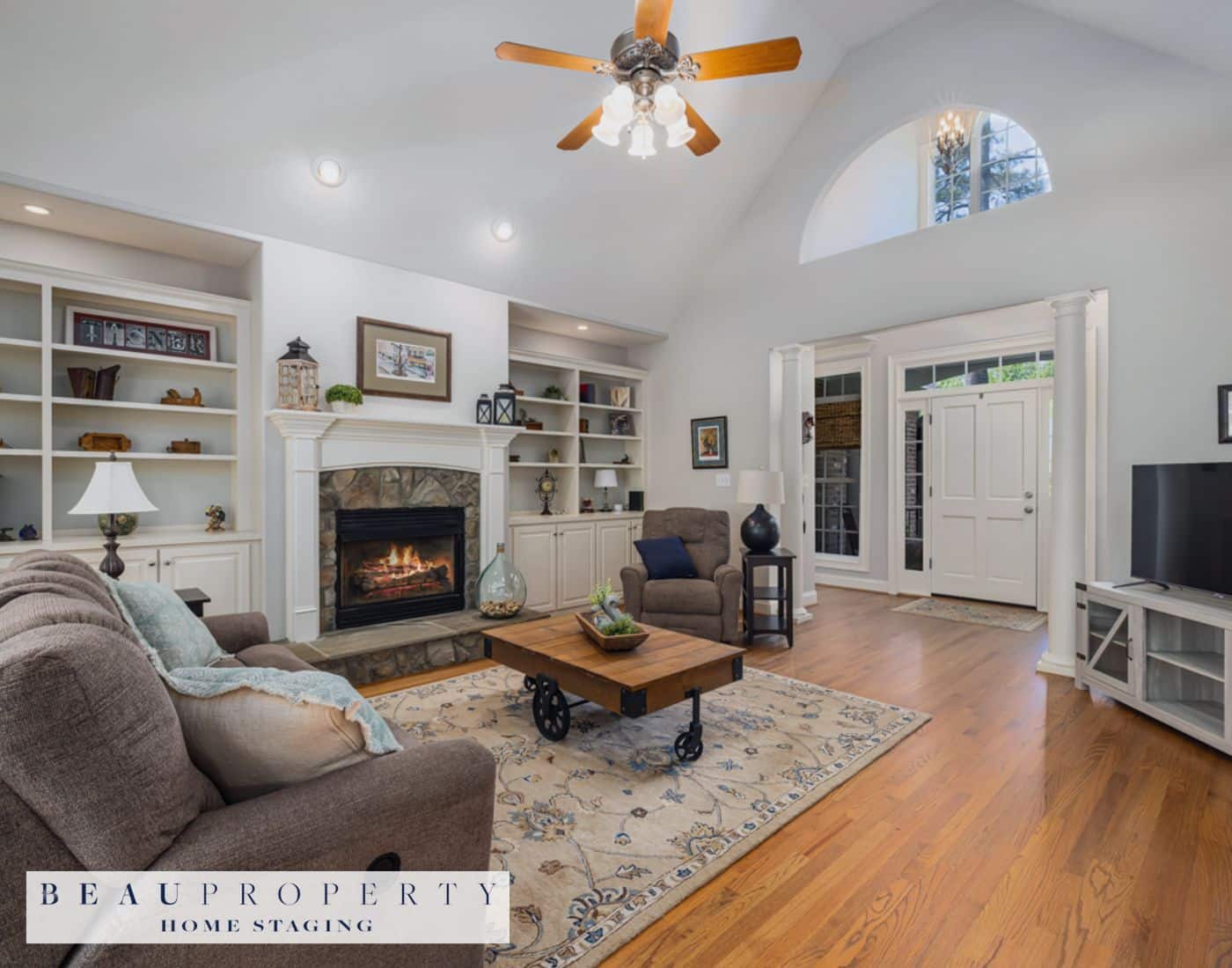Introduction to Living Room Staging
Overview of Living Room Staging Benefits
When it comes to selling a home, first impressions are crucial. Living room staging involves preparing and decorating a space in a way that appeals to potential buyers, helping them visualise their future in the home. Staging transforms a property from a blank canvas into a welcoming, appealing home where buyers can see their lives unfolding.
One of the primary benefits of living room staging is that it can help sell your home faster and often at a higher price. According to the National Association of Realtors, 82% of buyer agents say that staging makes it easier for clients to visualise the property as their future home. Staging allows you to showcase your home’s potential by highlighting its best features and minimising any negatives. This positive first impression is essential in a competitive real estate market.
Furthermore, staging is a small investment that can lead to a significant return. Around 75% of sellers who stage their homes see a return on investment (ROI) of 5% to 15% over the asking price when they choose professional staging before putting their homes up for sale.
Importance of First Impressions in Real Estate
First impressions in real estate are more important than you might think. The initial judgement a buyer makes happens within the first few moments of entering a home, often before they even step inside. This immediate judgement can occur within as little as 50 milliseconds and is felt rather than thought. It’s a visceral response that can sway a buyer one way or the other.
Living room staging plays a crucial role in creating a positive first impression. A well-staged living room shows the potential that space has and how it can be used effectively. For instance, you could turn a small nook into a cosy home office or a reading corner, appealing directly to buyers looking for multifunctional spaces.
Staging also makes it easier for buyers to picture themselves living in the home. This is especially important as buyers are often looking for a home that aligns with their lifestyle and needs. Personal items and clutter can make it difficult for them to see beyond the current owner’s belongings, so a neutral yet stylish setup is key. This clean, clutter-free environment presents a “blank canvas” without distractions, helping buyers envision their own style and life within the space.
All these benefits culminate in making the home more memorable compared to other properties a buyer might be considering. This memorability is a crucial factor in a buyer’s decision-making process. Hence, staging isn’t just about making a home look prettier; it’s about strategically appealing to the buyers’ emotions and needs, increasing the likelihood of a successful sale.
Identifying Focal Points
When it comes to staging a living room, one crucial step is identifying and enhancing the room’s natural focal points. These features can dramatically increase a space’s appeal by drawing attention and creating a lasting impression on potential buyers. But how do you find these focal points, and what can you do to accentuate them effectively?
How to Spot Natural Focal Points
The first step in highlighting focal points is being able to spot them. Typically, the focal point in a room is the element that your eyes naturally land upon first as you enter the space. This could be anything from an architectural feature like a fireplace to a large window that frames a stunning view. Essentially, it should be the “wow factor” of your living room.
Tips for Identifying Focal Points:
- Architectural Features: These include fireplaces, ornate cornices, or built-in shelving. Anything that adds architectural interest tends to draw the eye.
- Windows: Particularly large or well-placed windows with great views serve as natural focal points because they bring the outdoors inside, adding an extra dimension to the room.
- Walls: Accent walls with bold colours, unique textures, or eye-catching artwork can immediately become the room’s focal point.
- Furniture: A standout piece like a grand piano or a large sectional sofa can also serve as a focal point if placed thoughtfully within the room.
Enhancing Natural Focal Points
Once identified, the next step is to enhance these focal points to ensure they command attention without overwhelming the space.
Ways to Enhance Focal Points:
- Fireplaces: A fireplace can be highlighted by adding a striking mantel, choosing an eye-catching surround like stone or tile, or even hanging a piece of unique artwork above it. Balancing furniture around the fireplace also helps to emphasise this feature.
- Windows: Make large windows stand out by dressing them in elegant curtains that frame the view without obstructing it. For smaller windows, adding a pop of colour on the surrounding wall or placing a statement piece of furniture in front of it can make it more noticeable.
- Accent Walls: Create an accent wall using bold colours, textured wallpaper, or even a gallery of artwork. Select a wall that is opposite the main entrance to have the most visual impact.
- Furniture Arrangements: A well-positioned piece of furniture or an arrangement that centres around the focal point can serve to highlight it further. This is especially useful in rooms with more than one focal point, as it helps to create a cohesive look without overcrowding.
Examples of Common Focal Points
Fireplaces
Fireplaces naturally serve as focal points due to their size and functionality. To make the most of a fireplace, consider investing in a stylish mantel, adding decorative tiles, or using brick to create a texture that draws the eye. Shelving or artwork around the fireplace can also enhance its focal appeal.
Bay Windows
Bay windows not only bring in plenty of natural light but also usually face interesting views, making them ideal focal points. Add a window seat with plush cushions or highlight the architecture with elegant drapery. If privacy isn’t an issue, allow the windows to remain uncovered to keep the view as the centre of attention.
By carefully identifying and enhancing the natural focal points in your living room, you can create a welcoming and visually appealing space that appeals to potential buyers. This thoughtful approach not only makes the room look more attractive but also helps in creating memorable first impressions, a crucial aspect in real estate staging.
Optimising Furniture Layout
Tips for Furniture Arrangement to Maximise Space
When preparing your living room for staging, the way you arrange your furniture can make a world of difference. A thoughtful layout not only maximises space but also enhances the room’s functionality and flow. Here are some practical tips to help you get the most out of your living room:
Consider Popular Furniture Layouts
The first step is to choose a layout that complements your space and meets your functional needs. Popular options include:
- Symmetrical Arrangements: Perfect for creating a formal look. Place matching sofas or chairs across from each other.
- Floating Furniture: Instead of lining all furniture along the walls, try placing pieces away from the walls to create a more intimate seating arrangement.
- Zoned Layouts: Using rugs to define different zones, such as a sitting area and a work nook, can make the room feel larger and more functional.
Follow the Rule of Proportion
An often overlooked rule is ensuring your furniture matches the size of your room. According to the 2:3 rule, your sofa should be about two-thirds the size of your living room’s length. This helps create a balanced look without overwhelming the space.
Maximise Traffic Flow
Ensure pathways are clear to encourage easy movement throughout the room. This not only makes the space feel larger but also more accessible. Avoid blocking doors, windows, and other high-traffic areas.
Use Multifunctional Furniture
Opt for pieces that offer more than one use, such as a coffee table with storage or an ottoman that can serve as both seating and a table. This approach maximises utility without cluttering the room.
Avoid Common Layout Mistakes
While arranging your furniture, there are a few pitfalls you should avoid to ensure a cohesive and appealing design:
Don’t Push Furniture Against Walls
One common mistake is to push all furniture up against the walls. This can make the room feel cold and uninviting. Instead, allow pieces to float and create a more conversational layout.
Avoid Overcrowding
Too much furniture can make a room feel cramped and chaotic. Select a few key pieces that fit well and provide necessary functionality. Removing excess furniture can open up the space and make it more inviting.
Neglecting Scale and Proportion
Ensure all your furniture is proportionate to the room. Oversized sofas or tiny coffee tables can disrupt the room’s balance. Sticking to a consistent scale helps create a harmonious look.
By implementing these tips and avoiding common mistakes, you can optimise your living room layout effectively. Remember, the goal is to create a space that feels spacious, functional, and inviting.
Colour Schemes and Lighting
Choosing the Right Colours for Walls and Decorations
Selecting the right colour palette for your living room can significantly influence its overall ambience and perceived size. Colours can evoke emotions, alter moods, and even affect the perceived size of a space. To achieve the best results, consider concepts like the 60-30-10 rule: 60% of a dominant colour, 30% of a secondary colour, and 10% of an accent colour. This balance ensures a harmonious look without overwhelming the senses.
- Lighter and Cooler Colours: These can make a small living room feel larger and more open. Colours such as light blues, greys, and whites reflect more light, giving the illusion of more space.
- Darker Colours: Used in moderation, darker shades can create depth and a cosy, intimate atmosphere. However, too much can make the room appear smaller and more enclosed.
- Accent Colours: Strategic use of bold colours can draw attention to particular features or elements in the room, such as a fireplace or an exquisite piece of furniture.
Impact of Lighting on the Perception of Space
Lighting is a game-changer when it comes to staging your living room. The right lighting can make the room appear larger, highlight architectural features, and improve overall ambience.
- Natural Light: Maximising natural light is crucial. Light from windows not only makes the room feel airier but also emphasises the true colours of your walls and décor. Full-spectrum natural light is particularly effective for darker rooms, combating the cramped feeling that lack of light can cause.
- Artificial Light: Complement natural light with well-placed artificial lighting. This can include overhead lights, floor lamps, and table lamps. The key is to create layers of light:
- Ambient Lighting: Provide overall illumination with chandeliers, ceiling, or recessed lighting.
- Task Lighting: Focus on specific tasks areas, like reading nooks or workspaces, with desk lamps or under-cabinet lights.
- Accent Lighting: Highlight key features and enhance the mood with spotlights, wall sconces, or led strip lights.
- Balance: Finding the right balance between natural and artificial lighting is essential. Too much light can oversaturate colours and make the room feel overbearing, while too little light can make it feel gloomy.
Practical Tips to Enhance Lighting
- Use Mirrors: Placing mirrors opposite windows or light sources can reflect light back into the room, making the space feel larger and brighter.
- Select the Right Bulbs: Choose bulbs that mimic natural daylight to enhance the true colours of your room and avoid harsh shadows.
- Emphasise Vertical Space: Use long pendant lights or tall lamps to draw eyes upwards, thus making the room feel taller and more spacious.
With the right blend of colours and lighting, your living room can be transformed into an inviting and dynamic space that appeals to a wide range of potential buyers.
Decluttering and Depersonalising
Steps to Declutter Effectively
The transformation of your living room begins with a thorough decluttering process. Over time, our living spaces tend to accumulate an array of items that, while cherished, can create a sense of chaos. Here’s a step-by-step approach to effectively declutter your living room:
- Take it Room by Room
Avoid the overwhelm by tackling one room at a time. Concentrate entirely on clearing clutter in the living room before moving on to other areas of your home. This method ensures you stay focused and efficient. - Clear All Surfaces
Start by emptying surfaces such as coffee tables, side tables, and mantels. Dust them thoroughly and return only essential or aesthetically pleasing items. This instantly makes your space look more organised and open. - Implement the 20/20 Rule
Consider adopting the 20/20 rule: anything you get rid of that you truly need can be replaced for less than $20 in less than 20 minutes. This mindset can simplify decisions about what to keep and what to discard. - Utilise the 3-foot 5-foot Rule
When decluttering, consider both up-close details and overall design. Items should look good from 3 feet away (for immediate, detailed inspections) and from 5 feet away (for overall impression). This can help in creating a coherent, appealing space. - Purge Unnecessary Items
Identify items that don’t serve a purpose or add value. Old magazines, unused gadgets, excess toys, and threadbare throws should be sorted, recycled, donated, or discarded. - Store Personal Items
Personal collectibles, family photos, and mementos should be packed away. These items, while meaningful to you, can distract potential buyers and make it harder for them to envision the space as their own.
Benefits of Depersonalising the Space
Depersonalising is a critical step in staging your living room. By creating a neutral environment, you cater to the imagination of potential buyers, allowing them to visualise their own lives unfolding in the space. Here are some compelling reasons to depersonalise:
- Creates a Blank Canvas
Removing personal items helps to create a neutral backdrop. This simplicity allows buyers to project their own ideas and preferences onto the space. - Highlights the Home’s Features
A depersonalised space directs attention to the architectural details and design features of the home, rather than the inhabitants’ belongings. This can make the home’s strengths and potential stand out more clearly. - Eases Emotional Attachment
For sellers, depersonalising can facilitate the emotional detachment necessary to sell a home. Viewing the space in a less personal light may make the transition smoother and less sentimental. - Improves Perception of Space
Potential buyers can better appreciate the size and layout of a room when it’s free of personal artefacts. This clear, open space makes it easier to judge how their own furniture and belongings might fit.
Accessorising and Decorating
Transforming your living room from ordinary to extraordinary involves more than just smart furniture placement and a good colour scheme. Accessories and decor are the final pieces that bring the whole look together, adding personality, warmth, and charm. Here, we’ll break down how to select appropriate accessories and use decor to enhance your room’s appeal.
How to Select Appropriate Accessories
Choosing the right accessories is key to making the most of your space. It’s not just about filling the room but about thoughtful selection:
- Neutral Foundation: Start with a neutral base. This makes it easier to swap out accessories as seasons or trends change. Think neutral cushions, rugs, and curtains.
- Accent Colours: Add splashes of colour to bring life to the room. Using the 60-30-10 rule is effective: 60% dominant colour (usually neutral), 30% secondary colour, 10% accent colour. This can be achieved with items like throw pillows, vases, or artwork.
- Scale and Proportion: Ensure that the size and scale of the accessories complement the space. For instance, a small object on a large coffee table can seem lost, while a large sculpture in a tiny room can overwhelm.
- Functional Items: Choose items that also have a functional purpose. Think stylish storage baskets, chic clocks, or embellishing the coffee table with practical and beautiful trays.
Using Decor to Enhance the Room’s Appeal
Accessories should be more than just pretty; they should enhance the functional and aesthetic appeal of the room:
- Texture Variety: Incorporate different textures like soft textiles, sleek metals, and natural woods to add depth and interest. This could include velvet pillows, metallic vases, and wooden picture frames.
- Layering: Layering items like rugs, pillows, and throws can add comfort and visual interest. A curated look of layered textiles can make a room seem more inviting and cosy.
- Lighting: Use lighting to complement your decor. A mix of ambient, task, and accent lighting is ideal. Consider stylish floor lamps, table lamps, and wall sconces to create a warm and welcoming atmosphere.
- Personal Touches: While it’s important to depersonalise, subtle personal touches can make your space unique. Use items like a framed map of a favourite city or a collection of vintage books to add character.
Accessory Examples
To make your room cohesive, consider these common accessory categories:
- Throw Pillows and Blankets: These are an easy way to introduce colour and texture. They can also be switched out seasonally.
- Artwork and Mirrors: Hang art that complements the room’s colour scheme. Large mirrors can make the space seem larger and brighter by reflecting light.
- Books: Coffee table books that reflect your interests can be both stylish and personal. Stack them neatly to add structure.
- Plants and Flowers: Bring life into the room with potted plants or a fresh flower arrangement. Even small succulents can add a pop of green and a touch of nature.
- Candles and Lanterns: These add warmth and a welcoming atmosphere. They are particularly great for evening viewings, creating a cosy ambiance.
Choosing and arranging the right accessories is not just about making the space look good; it’s about creating a homey feel that potential buyers can envision themselves living in. Attention to detail with accessories and decor leaves a lasting impression, making your living room unforgettable.
Final Touches and Review
Once you have carefully selected accessories and made sure your living room looks inviting, it’s crucial to pull all elements together for a cohesive finish. These final touches will help ensure that potential buyers can effortlessly picture themselves living there.
Ensuring All Elements Come Together Cohesively
A cohesive living room design creates visual harmony, making the space seem more appealing and professionally arranged. Here are some steps to ensure your staging efforts come together seamlessly:
- Stick to a Colour Scheme: To create a cohesive look, stick to a similar colour palette throughout the room. Using complementary hues not only creates visual balance but also evokes a pleasant atmosphere. For instance, balancing bold patterns on curtains with solid colours on furniture can unify the room.
- Balance Design Elements: Balance design elements like colour, pattern, and texture. If you have a busy pattern on one side of the room, balance it by incorporating simpler elements elsewhere. For example, a bold patterned area rug can be balanced with more subtle furniture choices. Adding a few well-placed decorative pillows or a throw can also tie the room together without overwhelming it.
- Repetition and Consistency: Don’t shy away from repetition. Repeating elements like fabrics, colours, or shapes can make the design feel intentional and harmonious. Consistency in decor, such as matching finishes on light fixtures and hardware, contributes to a cohesive aesthetic.
- Neutral Foundations: Start with a neutral foundation, such as a beige sofa or white walls, and build layers of interest through accessories. This approach ensures that the space remains adaptable and universally appealing while adding character and depth.
- Texture Variety: Incorporate different textures to add visual interest. Mix soft textures like cushions and throws with hard textures like glass or wood to create a well-rounded and inviting space. This variety prevents the room from looking flat and adds comfortable appeal.
Preparing for Open House and Viewings
Preparation is key to making a strong impression during an open house. Here’s a checklist to ensure your living room is ready to wow potential buyers:
- Deep Clean: The importance of cleanliness cannot be overstated. A spotless living room conveys a sense of care and maintenance. Ensure windows are clean and bright, and all surfaces are free of dust and smudges.
- Declutter and Depersonalise: Make the space welcoming by removing personal items such as family photos and personal collections. A minimalistic approach helps potential buyers envision their belongings in the space.
- Lighting: Replace any burnt-out bulbs and consider using higher wattage bulbs in dim areas. This not only brightens the room but also makes it feel more spacious and inviting.
- Repair and Update: Fix any broken items and update where necessary. Small fixes, such as leaky faucets or chipped paint, can make a big difference in the perception of the space’s upkeep.
- Scents and Ambiance: Use subtle, inviting scents like fresh linen or citrus, which can enhance the experience without overpowering the senses. Ensure the ambiance is warm and welcoming, with appropriate lighting levels and perhaps soft background music.
- Final Walkthrough: Perform a final walkthrough from the perspective of a buyer. Look out for anything that might distract or detract from the room’s appeal, and adjust as necessary.
By following these steps, you ensure all elements in your living room come together perfectly, ready to make a lasting impression on potential buyers. Keeping everything cohesive and well-prepared ultimately sets the stage for successful viewings and a quicker sale.

